Siskin, Red
Black-hooded Red Siskin
(Carduelis cucullata)
The Venezuelan Black-hooded Red Siskin (Carduelis cucullata), is 4″ inch in length. The male has a beautiful visual deep rich vermilion (red) plumage on it’s breast, belly and undertail coverts, red also appears on the rump, a uppertail coverts, wing bars, and appears on the back of the neck which blends to gray on the back. The head, chin, throat, flight feathers, and tail are black. White appears around the vent, underwing-coverts, and legs.
The adult female holds all similar markings as the male with the exception of the black hood. The red coloring on the female only appears on the upper portion of the breast, and appears on the wing bars, rump, and sometimes the undertail coverts.
Juveniles are all gray and begin to molt their plumage at 3-4 months. As the birds age the red color deepens. No color food is needed with these birds. Their coloring never fades! This is the reason they are so sought after by the canary fanciers. The red gene is breed in to canaries and used to enhance the color (red factor) in the canary or for colorbred lines.
The Red Siskin has been protected by the Venezuelan government since the 1940’s, the Convention on International Trade in Endangered Species (CITES) since 1975, and has been listed as an endangered species by the U.S. Fish and Wildlife Service since 1976. The United States Fish and Wildlife Service considers any captive bred siskins (including offspring or any hybridized young) as being protected under the endangered species act..
In the US it is unlawful to buy or sell these birds within or across state lines without a captive-bred wildlife endangered specie permit issued by the U.S. Fish & Wildlife. Individual states may require state endangered species or other permits as well.
Females build their nests in canary wicker baskets or freelance building in greenery. Nesting materials include dry fine grass, grass rootlets, burlap, and coco fiber. The outside of the nest would be constructed with coarse material first, and then the birds will line the inside with the softer materials. The female does all the work. Usually 3-4 eggs are laid. The male may remain with the female through incubation and hatching. After the eggs hatch it is advised to remove the male, if either bird begins to show any signs of aggression. Eggs are white in color and will hatch after 12-14 days (depending on when the female began incubation).
Siskin chicks are quite small. Their begging posture is head held up right and beaks wide open. Peeps can be barely heard the first few days. Begging sounds are more noticeable after day 4. At 4-5 days the hen stops sitting. At this time precautions should be taken to ensure the chicks are well-fed before the lights go out and that the room remains warm (about 70 degrees). The hen does all the feeding. Egg food, rearing formula, dried canary or finch egg food and soaked siskin mix should be provided. At 6 days old the chicks can be closed banded with NFSS size C bands. By 12 days the chicks are fully feathered. After the clutch and rearing cycle is completed, remove the offspring into a free flight. Reintroduce the male and a new cycle will begin.
A good standard seed mix for this species consists of Niger/thistle Seed 31%, Canary Grass Seed 31%, Hulled Oats 15%, Perennial Ryegrass 10%, German/Yellow Millet 5%, Sesame Seed (unhulled) 5%, Flax Seed 2.6% Canola Rape Seed 2.6%, Hemp Seed 2.4% and Teazle Seed 4%.
This site uses Akismet to reduce spam. Learn how your comment data is processed.

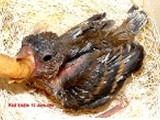
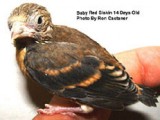
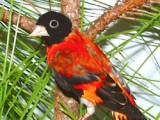
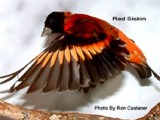
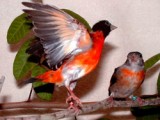
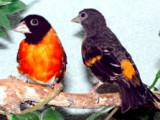
Leave a Reply
You must be logged in to post a comment.